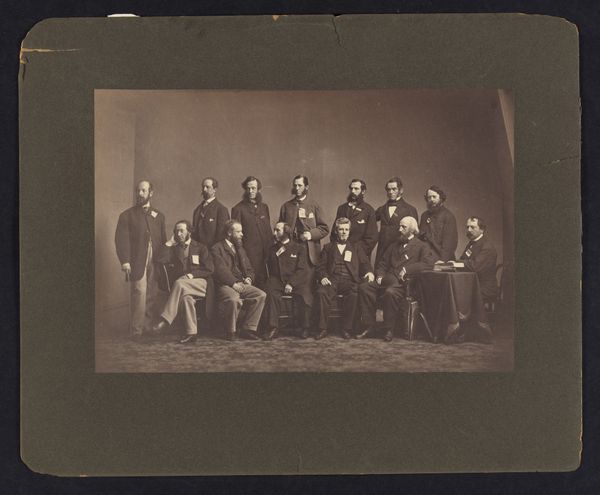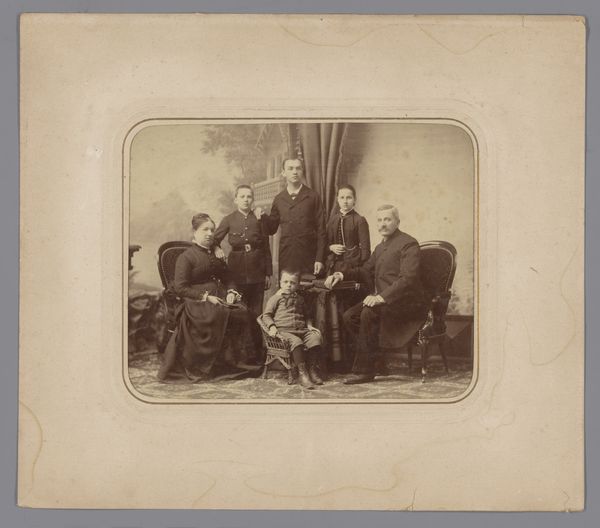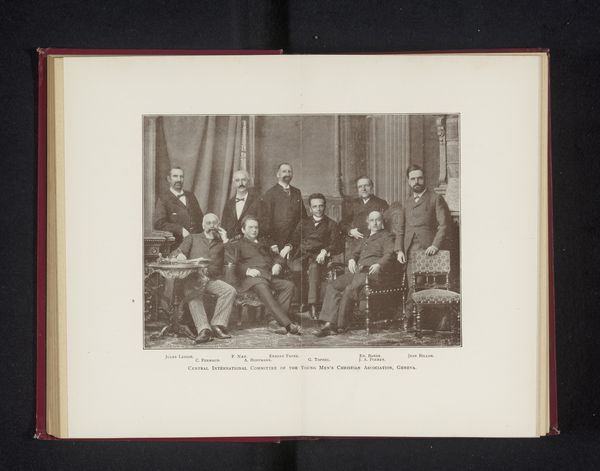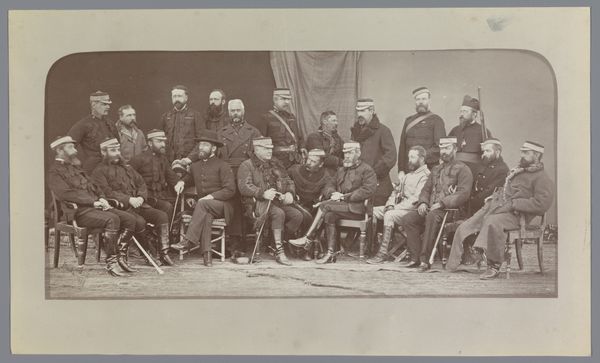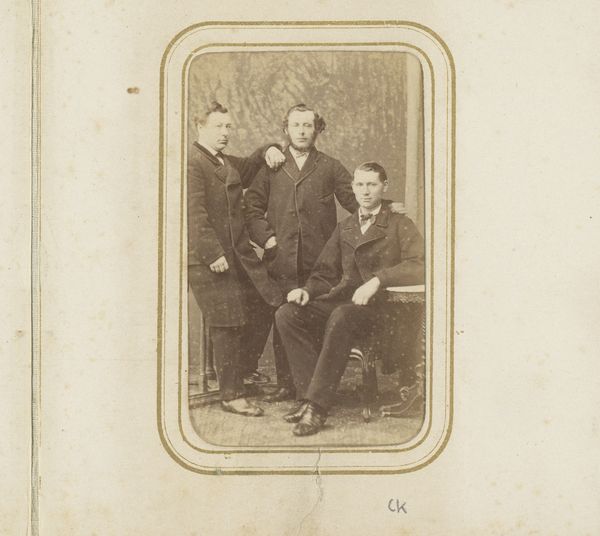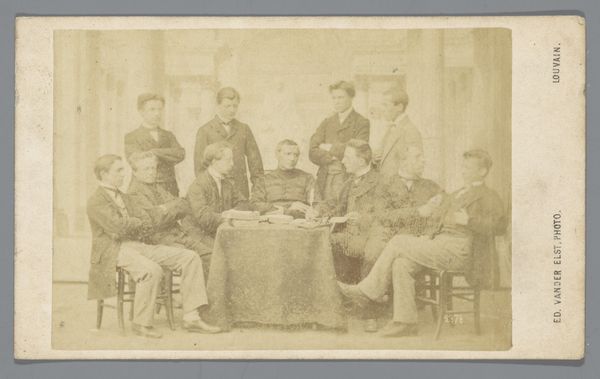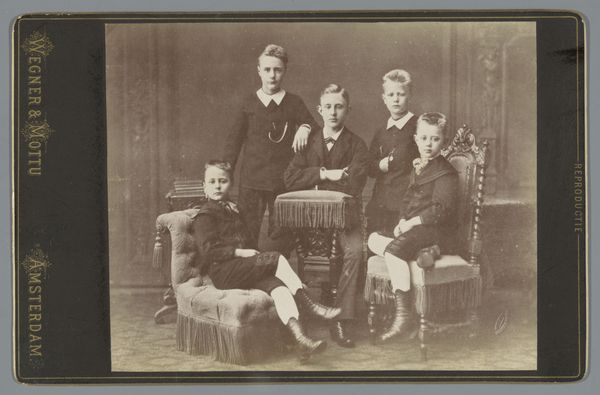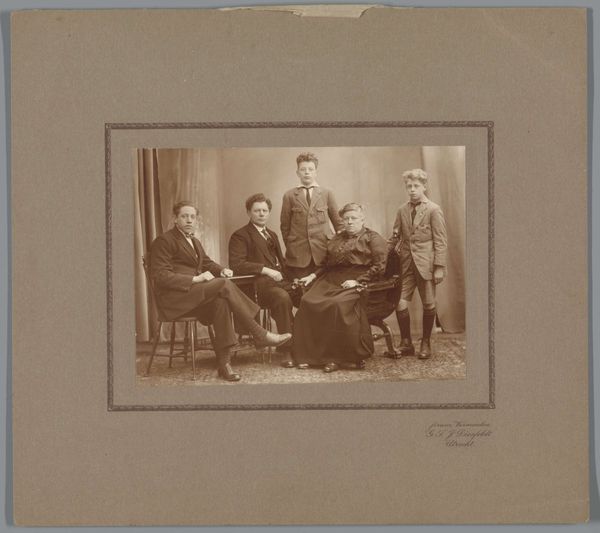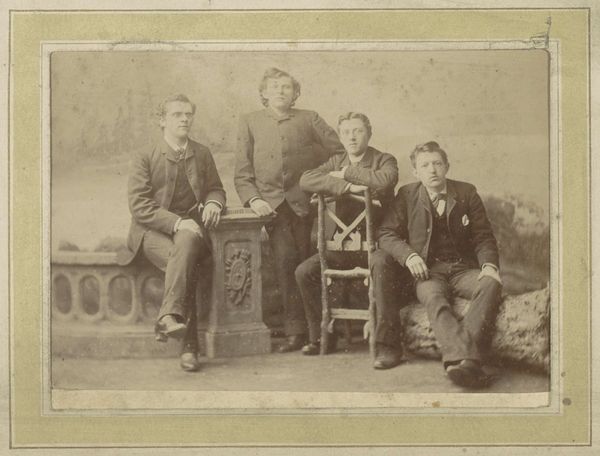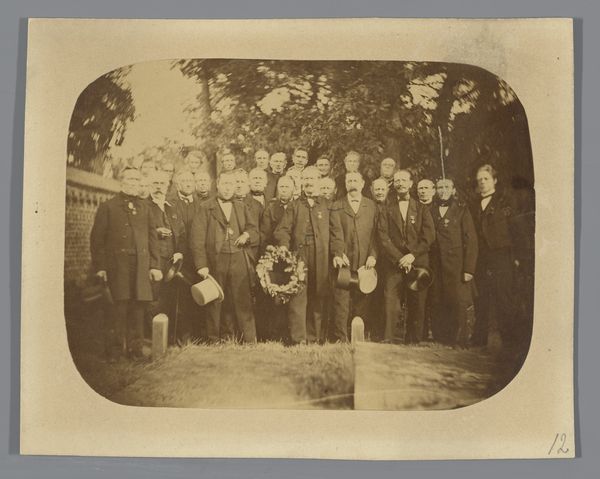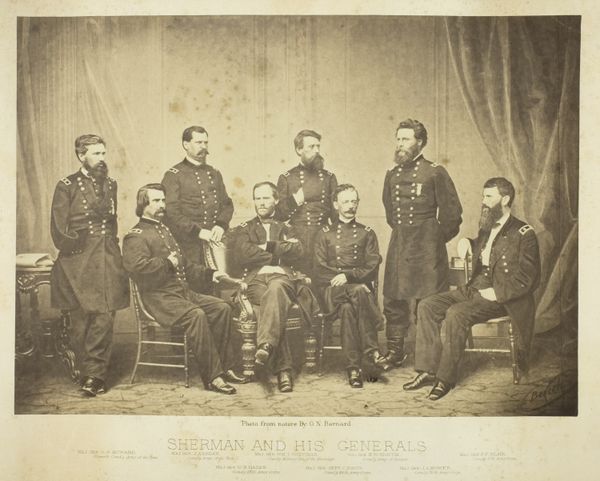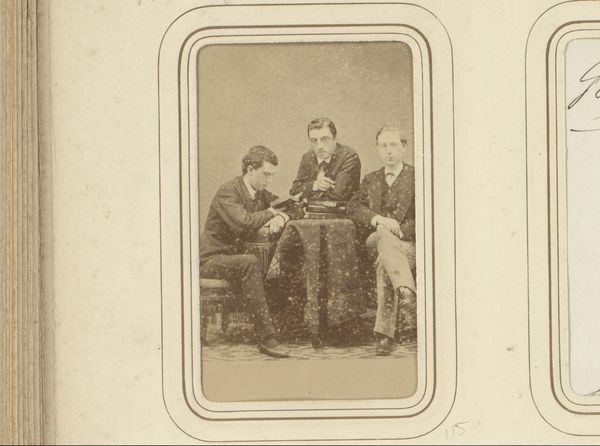
Groepsportret van negen mannen uit de interim-regering na de Spaanse revolutie van 1868 1868
0:00
0:00
juanlaurent
Rijksmuseum
Dimensions: height 120 mm, width 88 mm
Copyright: Rijks Museum: Open Domain
Curator: Immediately, I'm struck by the formality, the arrangement...almost architectural. A somber, serious geometry. Editor: Well, let's not forget the image itself. We're looking at "Groepsportret van negen mannen uit de interim-regering na de Spaanse revolutie van 1868," by Juan Laurent, captured in that very year. It's an albumen print currently residing at the Rijksmuseum. It certainly speaks to a pivotal moment, but tell me more about the structure you see. Curator: Notice the placement of figures. Two clusters flank a central pair, leading the eye—balanced symmetry despite the informal grouping. Their attire reinforces this: dark suits create a unified visual field. A central table with sculptural objects gives depth to the arrangement and leads the eye in a balanced formal harmony. Editor: Albumen printing was no small feat; the meticulous layering and exposure required immense skill and time, a collaborative endeavor often unseen in the final "artistic" product. The resulting sepia tones—an aesthetic choice or technical limitation—lend it that air of solemn history. Think of the chemistry, the labor involved in producing these prints en masse! Curator: The sepia tone absolutely serves to communicate stability and decorum. More significantly, note the subtle variations in texture: the smooth planes of the walls contrast with the detailed faces, creating depth and engaging the viewer’s eye. Even the out-of-focus sections along the perimeter feel deliberate. Editor: And that "deliberate" feel hints at careful staging, the construction of power through representation. Look at how this portrays a "government." Not revolutionary masses, but nine bourgeois men presented in an interior suggesting authority. The photographic process, too—then cutting-edge—symbolized modernity aligned with the revolution’s promise. It's material and image interwoven in conveying a very specific message. Curator: Precisely! Each figure contributing to a meticulously calibrated overall effect of authority and order. This isn't happenstance, but intentional design—composition as ideology. Editor: I appreciate your eye for design, revealing the unseen effort behind conveying not just faces, but values too. The chemical process itself becomes part of how that revolution chose to present itself to the public. Curator: A fine counterpoint, indeed. One sees in the details, structure, the intentional aesthetic crafting of power and stability at a crucial moment in time. Editor: Exactly. It serves to underline how process and materiality—the 'how' and 'what' of making art—are inextricably tied to political narratives and historical circumstance.
Comments
No comments
Be the first to comment and join the conversation on the ultimate creative platform.
